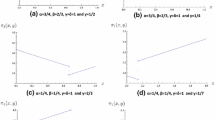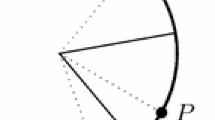Abstract.
In this paper is remarked that “mixed” strategies in games of electoral competition do not need to be interpreted as random moves. There are two a priori symmetric parties, and a finite (non spatial) set of alternatives. Parties are allowed to take unclear positions, by campaining on a “platform” that is a mix of several alternatives. Each individual nevertheless identifies a party with a single alternative, the number of individuals who identify a party with a given alternative being proportional to the importance of that alternative in the party’s platform.
Similar content being viewed by others
Author information
Authors and Affiliations
Additional information
Received: 24 March 1998/Accepted: 3 March 1999
Rights and permissions
About this article
Cite this article
Laslier, JF. Interpretation of electoral mixed strategies. Soc Choice Welfare 17, 283–292 (2000). https://doi.org/10.1007/s003550050021
Issue Date:
DOI: https://doi.org/10.1007/s003550050021




